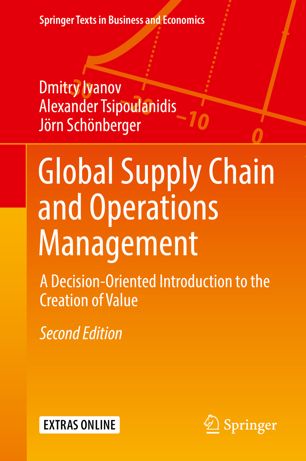

Most ebook files are in PDF format, so you can easily read them using various software such as Foxit Reader or directly on the Google Chrome browser.
Some ebook files are released by publishers in other formats such as .awz, .mobi, .epub, .fb2, etc. You may need to install specific software to read these formats on mobile/PC, such as Calibre.
Please read the tutorial at this link: https://ebookbell.com/faq
We offer FREE conversion to the popular formats you request; however, this may take some time. Therefore, right after payment, please email us, and we will try to provide the service as quickly as possible.
For some exceptional file formats or broken links (if any), please refrain from opening any disputes. Instead, email us first, and we will try to assist within a maximum of 6 hours.
EbookBell Team

5.0
80 reviewsThe second edition of this textbook comprehensively discusses global supply-chain and operations management, combining value creation networks and interacting processes. It focuses on the operational roles in the networks and presents the quantitative and organizational methods needed to plan and control the material, information and financial flows in the supply chain. Each chapter starts with an introductory case study, and numerous examples from various industries and services help to illustrate the key concepts. The book explains how to design operations and supply networks and how to incorporate suppliers and customers. It also examines matching supply and demand, which is a core aspect of tactical planning, before turning to the allocation of resources for fulfilling customer demands.
This second edition features three new chapters: “Supply Chain Risk Management and Resilience”, “Digital Supply Chain, Smart Operations, and Industry 4.0”, and “Pricing and Revenue-Oriented Capacity Allocation”. These new chapters provide the structured knowledge on the principles, models, and technologies for managing the supply-chain risks and improving supply-chain and operations performance with the help of digital technologies such as Industry 4.0, additive manufacturing, Internet-of-Things, advanced optimization methods and predictive analytics. The existing chapters have been updated and new case studies have been included. In addition, the preface provides guidelines for instructors on how to use the material for different courses in supply-chain and operations management and at different educational levels, such as general undergraduate, specialized undergraduate, and graduate courses. The companion website www.global-supply-chain-management.de has also been updated accordingly. In addition, the book is now supported by e-manuals for supply-chain and operations simulation and optimization in AnyLogic and anyLogistix.
Providing readers with a working knowledge of global supply-chain and operations management, with a focus on bridging the gap between theory and practice, this textbook can be used in core, special and advanced classes. It is intended for broad range of students and professionals involved in supply-chain and operations management.